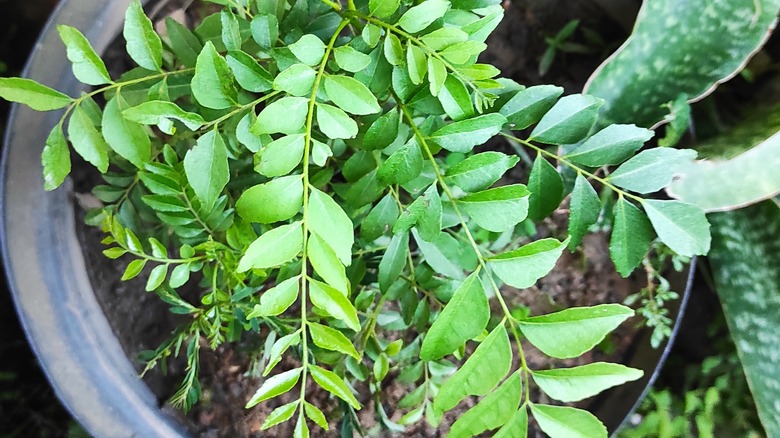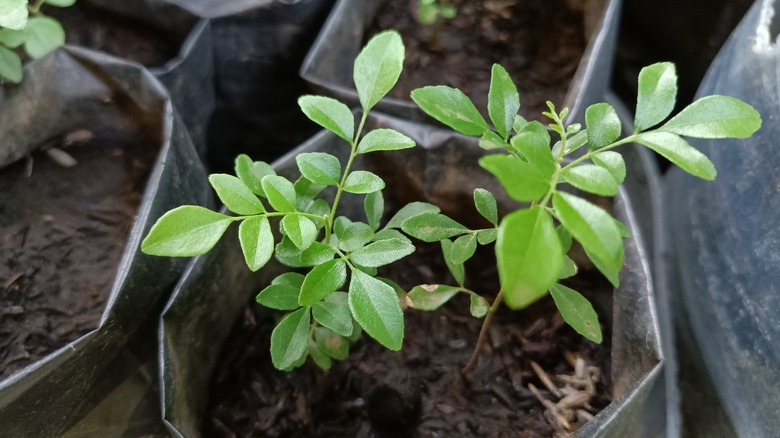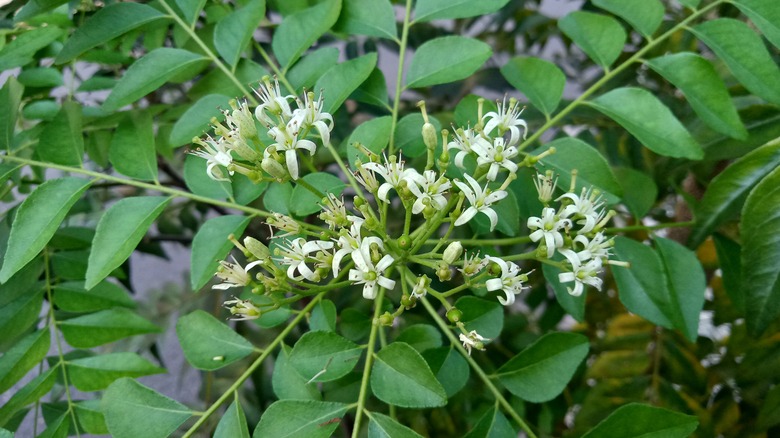Why You Should Grow Your Curry Leaf Plant Indoors
If you're looking for an indoor plant that is attractive and relatively easy to manage, one of the lesser-known houseplants you should keep an eye out for is the curry leaf plant (Murraya koenigii), which is technically the curry leaf tree. Also known as kadipatta plant, Indian bay, or curry bush, the plant has dark green leaves with a citrusy, grasslike smell. Don't confuse it with the curry plant (Helichrysum italicum). The leaves of the curry tree are edible and can be used to add spice to meals or to flavor oil. You should not harvest the leaves until your plant has reached a height of at least 6 inches.
The plant is native to India, so it's used to a tropical climate where it can reach 6 to 15 feet tall and 4 to 12 feet wide. However, in the U.S., it's best not to plant your curry leaf plant outside unless it has at least two years' growth and you live in a zone with a temperature that stays above 50 degrees Fahrenheit. If you live in zone 9 or below, your curry leaf plant can stay outside during the heat of summer, but will need to remain indoors during the colder months. Growing your plant indoors year-round will save you from having to move it and eliminate the risk that it will be harmed by sudden temperature changes. If potted correctly and cared for properly, your indoor curry leaf plant should thrive.
How to take care of your curry leaf plant
You can purchase a curry leaf plant from your local nursery or online, where you'll typically find three main kinds of curry leaf plants: the regular, dwarf, and gamthi varieties. The regular one tends to grow more quickly and get taller than the other two. As its name suggests, the dwarf variety is shorter than the other two, but it will make up for its height with bushier leaves. The gamthi variety is the slowest growing option. However, it does have more fragrant leaves.
To reach its full potential, a curry leaf plant needs around six to eight hours of direct sunlight so a south-facing windowsill is a great spot. Because it enjoys a tropical temperature and humidity, occasionally misting your curry leaf plant will help it acclimate to indoor temperatures. When you first get your plant, water it well. Check the soil for dryness regularly. Your plant will need light watering each time the top 2 inches of soil dry out. Don't be tempted to water it more often; otherwise, you risk root rot. As your plant grows, it may occasionally need repotting to prevent it from becoming root-bound. Signs that your plant needs a bigger pot include pale, dull leaves. To repot your plant into a larger container, loosen its roots delicately before planting it. Surround the roots with a potting soil that allows good drainage. This DIY potting soil recipe can save money.
Encouraging your curry leaf plant to flower
From spring through fall, curry leaf plants can produce clusters of beautiful sweetly scented, off-white flowers. Pruning during early spring can enable more light to reach the inner branches and can also stimulate bud growth. You should also apply a water-soluble fertilizer once every five weeks during the spring and summer months. To encourage blooming, make sure your plant is close to a window where it can get full sunlight. This will help to mimic the best outdoor conditions. If you don't have a spot where your plant can soak up enough direct sunlight throughout the day, you can have the same effect with one of five types of grow lights.
Curry leaf plants are self-pollinating, so if your plant flowers, it will develop clusters of green berries that turn dark purple berries when ripe. The berries are edible and rich in vitamin C. The seed inside each berry is mildly toxic and should be discarded. Your curry leaf plant will be dormant during fall and winter, so you don't need to fertilize it again until it wakes up in the spring.


